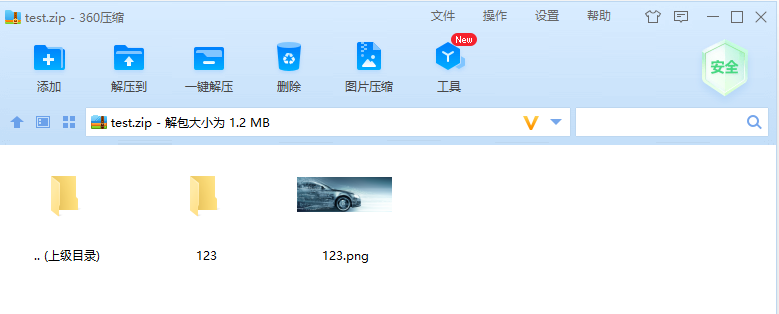溫馨提示×
您好,登錄后才能下訂單哦!
點擊 登錄注冊 即表示同意《億速云用戶服務條款》
您好,登錄后才能下訂單哦!
本篇文章給大家分享的是有關.Net Core 多文件打包壓縮的實現代碼怎么寫,小編覺得挺實用的,因此分享給大家學習,希望大家閱讀完這篇文章后可以有所收獲,話不多說,跟著小編一起來看看吧。
最近項目需要實現多文件打包的功能,嘗試了一些方法,最后發現使用 ICSharpCode.SharpZipLib 最符合項目的要求。
具體實現如下:

①壓縮文件夾
/// <summary>
/// 壓縮文件
/// </summary>
/// <param name="fileName">壓縮后獲得的文件名</param>
public static bool CompressFile(string dir, out string fileName)
{
string dest = System.Environment.GetFolderPath(System.Environment.SpecialFolder.Desktop) + "\\" + string.Format("{0:yyyyMMddHHmmss}", DateTime.Now) + ".zip"; //默認壓縮在桌面上
if (!Directory.Exists(Path.GetDirectoryName(dest))) //文件不存在就根據路徑創建 E:\\test
Directory.CreateDirectory(Path.GetDirectoryName(dest));
using (ZipOutputStream zipStream = new ZipOutputStream(File.Create(dest)))
{
zipStream.SetLevel(6); //壓縮級別0-9
CreateZip(dir, zipStream);
fileName = dest;
zipStream.Finish();
zipStream.Close();
}
return true;
}
/// <summary>
/// 壓縮內容到 zipStream 流中
/// </summary>
/// <param name="source">源文件</param>
/// <param name="zipStream">目標文件流(全路徑+文件名+.zip)</param>
private static void CreateZip(string source, ZipOutputStream zipStream)
{
Crc32 crc = new Crc32();
string[] files = Directory.GetFileSystemEntries(source); //獲得所有文件名稱和目錄名稱
foreach (var file in files)
{
if (Directory.Exists(file)) //如果是文件夾里有文件則遞歸
{
CreateZip(file, zipStream);
}
else //如果不是則壓縮
{
using (FileStream fs = File.OpenRead(file))
{
byte[] buffer = new byte[fs.Length];
fs.Read(buffer, 0, buffer.Length);
string tempFileName = file.Substring(file.LastIndexOf("\\") + 1); //獲得當前文件路徑的文件名
ZipEntry entry = new ZipEntry(tempFileName);
entry.DateTime = DateTime.Now;
entry.Size = fs.Length;
fs.Close();
crc.Reset();
crc.Update(buffer);
entry.Crc = crc.Value;
zipStream.PutNextEntry(entry);
zipStream.Write(buffer, 0, buffer.Length);
}
}
}
}②將指定文件打包壓縮 (可打包線上文件)
/// <summary>
/// 打包線上線下文件
/// </summary>
/// <param name="fileList">文件列表</param>
/// <param name="savepath">保存路徑</param>
public static void ZipOnlineFile3(List<string> fileList, string savepath)
{
//判斷保存的文件目錄是否存在
if (!File.Exists(savepath))
{
var file = new FileInfo(savepath);
if (!file.Directory.Exists)
{
file.Directory.Create();
}
}
Crc32 crc = new Crc32();
using (ZipOutputStream zipStream = new ZipOutputStream(File.Create(savepath)))
{
zipStream.SetLevel(9); //壓縮級別0-9
foreach (var url in fileList)
{
byte[] buffer = new WebClient().DownloadData(url);
string tempFileName = GetFileNameByUrl(url); //獲得當前文件路徑的文件名
ZipEntry entry = new ZipEntry(tempFileName);
entry.DateTime = DateTime.Now;
entry.Size = buffer.Length;
crc.Reset();
crc.Update(buffer);
zipStream.PutNextEntry(entry);
zipStream.Write(buffer, 0, buffer.Length);
}
}
}從文件路徑讀取文件名的方法:
public static string GetFileNameByUrl(string url)
{
//判斷路徑是否為空
if (string.IsNullOrWhiteSpace(url)) return null;
//判斷是否為線上文件
if (url.ToLower().StartsWith("http"))
{
return url.Substring(url.LastIndexOf("/") + 1);
}
else
{
return url.Substring(url.LastIndexOf("\\") + 1);
}
}通過此方法生成的壓縮包,所有文件都會顯示在同一層。
③如果需要在文件中創建目錄,需要在文件名稱上指定文件路徑
添加工具類:
/// <summary>
/// 文件對象
/// </summary>
public class FileItem
{
/// <summary>
/// 文件名稱
/// </summary>
public string FileName { get; set; }
/// <summary>
/// 文件路徑
/// </summary>
public string FileUrl { get; set; }
}
壓縮文件的方法:
/// <summary>
/// 打包線上線下文件
/// </summary>
/// <param name="zipName">壓縮文件名稱</param>
/// <param name="fileList">文件列表</param>
/// <param name="savepath">保存路徑</param>
public static string ZipFiles(string zipName, List<FileItem> fileList, out string error)
{
error = string.Empty;
string path = string.Format("/files/zipFiles/{0}/{1}/{2}/", DateTime.Now.Year, DateTime.Now.Month, DateTime.Now.Day);
//文件保存目錄
string directory = FileSavePath + path;
string url = FileHostUrl.TrimEnd('/') + path + zipName;
string savePath = directory + zipName;
try
{
if (!Directory.Exists(directory))
{
Directory.CreateDirectory(directory);
}
using (ZipOutputStream zipStream = new ZipOutputStream(File.Create(savePath)))
{
zipStream.SetLevel(9); //壓縮級別0-9
foreach (var item in fileList)
{
byte[] buffer = new WebClient().DownloadData(item.FileUrl);
ZipEntry entry = new ZipEntry(item.FileName);
entry.DateTime = DateTime.Now;
entry.Size = buffer.Length;
zipStream.PutNextEntry(entry);
zipStream.Write(buffer, 0, buffer.Length);
}
}
}
catch (Exception ex)
{
error = "文件打包失敗:" + ex.Message;
}
return url;
}調用參數示例:
{
"zipName": "test.zip",
"fileList": [
{
"fileName": "123.png",
"fileUrl": "https://file.yidongcha.cn/files/uploadfiles/image/2021/11/15/11c6de395fcc484faf4745ade62cf6e6.png"
},
{
"fileName": "123/456/789.jpg",
"fileUrl": "https://file.yidongcha.cn/files/uploadfiles/image/2021/11/15/fe922b250acf4344b8ca4d2aad6e0355.jpg"
}
]
}生成的結果:

以上就是.Net Core 多文件打包壓縮的實現代碼怎么寫,小編相信有部分知識點可能是我們日常工作會見到或用到的。希望你能通過這篇文章學到更多知識。更多詳情敬請關注億速云行業資訊頻道。
免責聲明:本站發布的內容(圖片、視頻和文字)以原創、轉載和分享為主,文章觀點不代表本網站立場,如果涉及侵權請聯系站長郵箱:is@yisu.com進行舉報,并提供相關證據,一經查實,將立刻刪除涉嫌侵權內容。